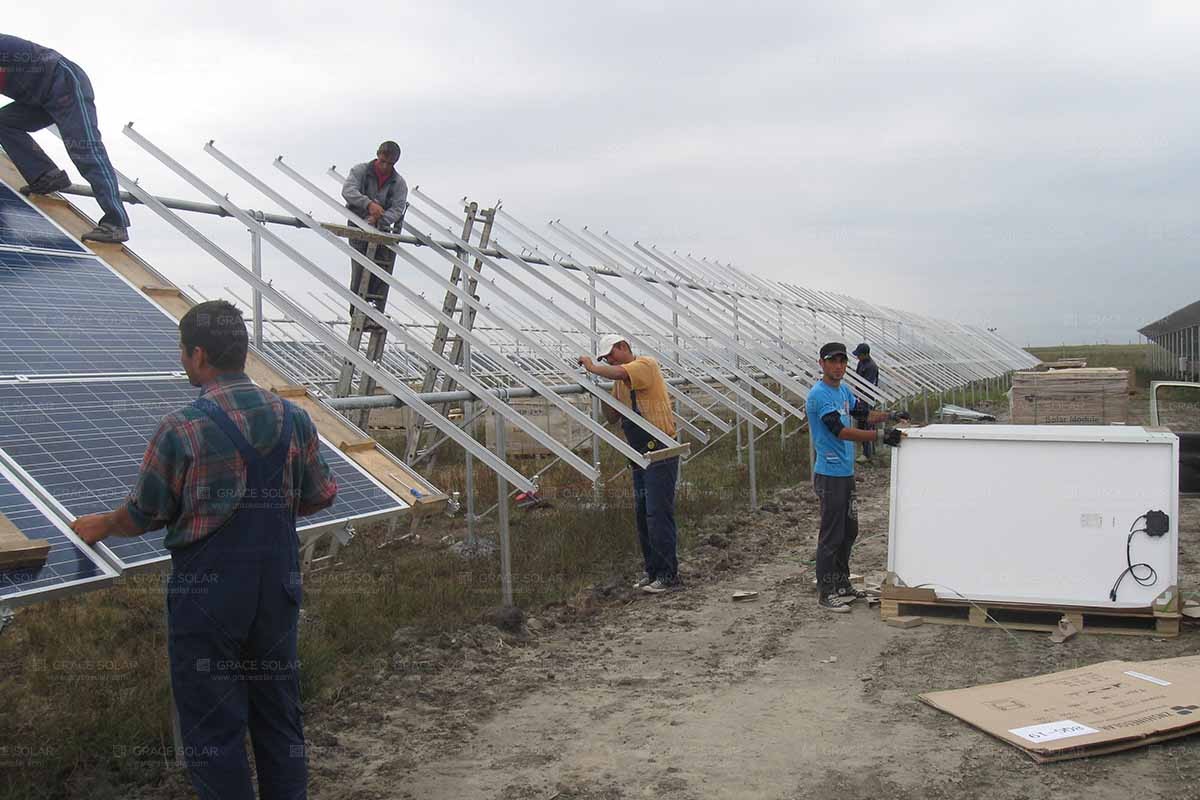Classification and characteristics of solar ground Mounts system
Solar photovoltaic power generation technology continues to mature, and its practicability is becoming more and more extensive. At present, the photovoltaic market attracts many companies to invest in projects to obtain benefits. However, how to choose a suitable solar bracket according to local conditions is an important link to ensure the efficient operation of the entire photovoltaic system.

1. Matters needing attention in the design and selection of solar stents
The installation structure of the solar photovoltaic support should be simple, strong and durable. The materials used to manufacture and install photovoltaic arrays must be able to withstand the harsh environment of the project site to ensure 25 years of weather resistance and corrosion resistance and structural strength.
Electroplated aluminum profiles, electroplated steel and stainless steel are all commonly used materials.
2. Common ground solar photovoltaic Mounts foundation
(1). Cement foundation
Introduction: If the installation site is not suitable for plug-in piles, you can choose to make a cement foundation. Place the ground photovoltaic support on the cement foundation and fix it with bolts.
Features: The depth of the foundation can be relatively shallow, but the amount of excavation and backfill is relatively large, and the amount of concrete is relatively large.
Scope of application: This type of foundation is mostly used in flat single-axis tracking photovoltaic supports with poor foundation bearing capacity, relatively flat sites, low groundwater levels, and high requirements for uneven settlement.

(2). Precast pile foundation
Introduction: Precast piles are made of various materials and various forms of piles (such as wooden piles, concrete square piles, pre-stressed concrete pipe piles, steel piles, etc.) made at the factory or construction site. The piles are driven into the pile with pile sinking equipment , Press or vibrate into the soil. The prefabricated piles used in my country's construction field are mainly concrete prefabricated piles and steel piles.
Features: It can be produced in batches, and the construction speed is fast. There is no fill and excavation in the construction, and only simple site leveling is required. Which increases the cost and the verticality is not easy to guarantee.
(3). Hammer into the ground pile
Introduction: Use a pile driver to directly drive C-shaped steel, H-shaped steel or other structural steel into the ground. This installation method is very simple, but the pull-out resistance is poor.
Features: fast speed, strong adaptability; high cost performance; not restricted by seasonal temperature; easy to pull out the piles, and does not affect the reuse of the installation site.
Scope of application: It is difficult to piling in hard soil areas; it is easy to be galvanized when piling in areas with a lot of gravel; corrosion resistance is poor when used in saline-alkali areas.

(4). Spiral pile
Introduction: After the 1880s, as an alternative pile type screw pile with unique advantages, it has been widely used in the United States, Australia and Europe and other countries, and can meet various engineering requirements such as compression resistance, uplift resistance and horizontal resistance.
Features: a metal or non-metallic pipe pile or column pile with spiral blades, which is screwed into the ground with special equipment, and the top of the pile is connected to the load. Its advantages are quick and convenient construction, greatly shortening the construction period, environmentally friendly, and environmentally friendly , Without vegetation, it can be implemented under various climatic conditions including winter in the north, which can facilitate migration and recycling.
During the construction of the photovoltaic array foundation and support, it is necessary to avoid damage to related buildings and ancillary facilities as much as possible.The so-called everything is difficult at the beginning, as long as we strictly control the foundation construction and make all deviations meet the requirements, not only can we avoid the subsequent installation of the ground solar mounting system such as skew and distortion, and greatly reduce the workload of on-site over-tolerance adjustment, but also It also plays an important role in improving the installation efficiency of subsequent brackets and ensuring the overall stability of the bracket installation.



.jpg)